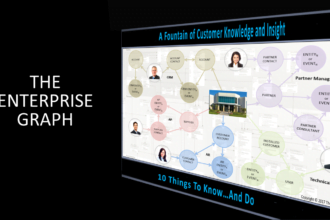Several months ago I wrote a post on making the intranet the hub of social activity for an enterprise. While social tools are seen as a major improvement over email because of their ability to make information more transparent and accessible to all, their benefits are limited without a centralized and cohesive framework for their use.
Several months ago I wrote a post on making the intranet the hub of social activity for an enterprise. While social tools are seen as a major improvement over email because of their ability to make information more transparent and accessible to all, their benefits are limited without a centralized and cohesive framework for their use. That’s where an intranet comes in.
Organizations adding social elements to their intranets are finding that doing so creates new opportunities for collaboration. When I spoke to Jack MacKay, CIO of the American Hospital Association, he told me the AHA lists the key initiatives of its 13 business units along with how they tie into the AHA’s central strategic plan. The result is “a direct line of sight” into projects that makes it easier to track them and identify possible areas for improvement. And as MacKay said, “As people become more aware of activities of other departments, they start seeing opportunities for cross-departmental collaboration.”
Writing for eBizQ, Dion Hinchcliffe lists three key elements of a social workplace:
- Social networks among workers. As Hinchcliffe notes, networks usually feature rich user profiles that maintain an employee’s connections to their colleagues and often employ updates and live work streams. By using search tools and querying connections, folks can readily find coworkers with relevant expertise. Hinchcliffe doesn’t mention it, but these kinds of profiles also create a sense of camaraderie and can help reinforce organizational culture. An Information Management article about a social intranet at the Mountain Equipment Co-op (MEC) mentions that giving employees an outlet to share their interest in activities like hiking and camping reinforces a corporate culture built on the ideas of environmental sustainability and passion for the great outdoors.
- Observable work. Openly sharing projects, tasks, documents and discussions exposes the collective intelligence that is largely unseen at most organizations, again making it easier for folks to find information they need. As Hinchcliffe says, a collaborative environment is a natural result with most work eventually being shared by default.
- Insights and analysis. This is the most nascent, yet most important, area for achieving a return on investment, writes Hinchcliffe. He says: “Not establishing the capabilities for capturing the business intelligence of an organization’s collaborative environments is one of the biggest ROI pitfalls organizations can make today in my estimate.”
As with any technology-enabled initiative, change management can make or break a social intranet. Change management must go beyond simply changing the behavior of individual workers to making broader organizational changes needed to support a more open and participative culture, Hinchcliffe writes.
With that in mind, I’m including some tips gleaned from my interview with the AHA’s MacKay, my more recent interview with Toby Ward, president of Prescient Digital Media and leader of “The Social Intranet Study 2011,” and the Information Management article on the Mountain Equipment Co-op’s intranet:
- Make social tools relevant to the way folks get their work done. As Ward told me, that means integrating them into the intranet home page and email. And help folks make the transition by sending email with links to relevant discussions on the intranet. MEC moved mission-critical processes, such as scheduling shifts and time off, to the intranet. At the AHA, the intranet is home to key applications like payroll and IT self-service and popular tools like Box.net.
- Get business leaders front and center. Ward says the most successful intranets he’s seen involve a joint ownership structure in which IT owns the underlying technology and a group like communications or HR owns the interface and the structure. He told me “The intranet is a business system, not an IT project or tool. So you need business ownership. IT plays a critical role. But a successful intranet is two parts process and people and only one part technology.”
- Customize where needed. Ward suggested starting with off-the-shelf software and then customizing. He said: “Most organizations won’t want to use SharePoint right out of the box. Your organization is not like your competition’s. You have your own unique culture and processes, and your homepage and your information architecture should reflect that uniqueness.” MEC’s site administrator Joey Dubuc is “constantly modifying” the intranet. He said: “Your information architecture can always be a little better. We try to figure out what people are using, what they aren’t using, and why they aren’t using it.”
- Recruit a top executive. This tip is so important, I recently devoted an entire blog post to it.
- Make the intranet easy and fun to use. The AHA employs single sign-on so users can easily move from one application to another. In a post about marketing the intranet, I wrote about a contest in which the City of Casey, Australia invited employees to name the intranet and created an illustration of the winning entry, “Boris.” Boris is prominently featured on the home page, which changes at least twice a month.
It’s hard to overstate the importance of planning to the success of an intranet. I highly recommend the 14-page Intranet Strategy Plan from our partners at the project management community site gantthead.com. It’s available free to IT Business edge members in our IT Downloads library.






